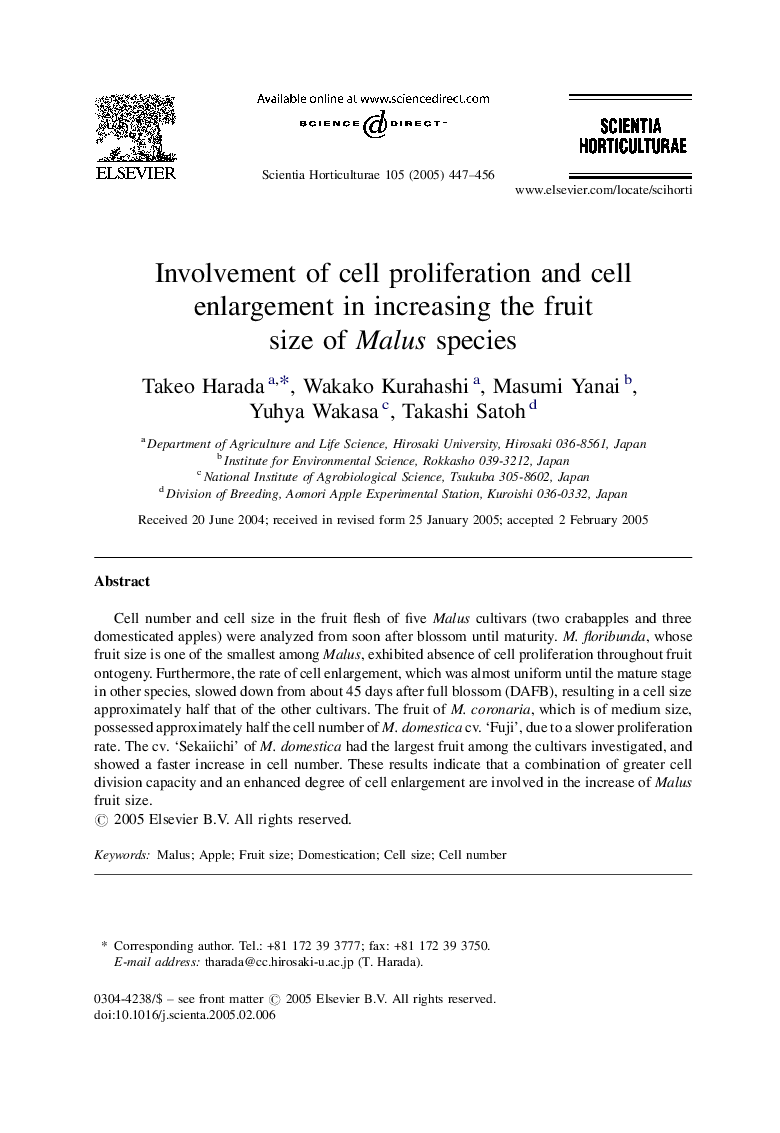| Article ID | Journal | Published Year | Pages | File Type |
|---|---|---|---|---|
| 9488930 | Scientia Horticulturae | 2005 | 10 Pages |
Abstract
Cell number and cell size in the fruit flesh of five Malus cultivars (two crabapples and three domesticated apples) were analyzed from soon after blossom until maturity. M. floribunda, whose fruit size is one of the smallest among Malus, exhibited absence of cell proliferation throughout fruit ontogeny. Furthermore, the rate of cell enlargement, which was almost uniform until the mature stage in other species, slowed down from about 45 days after full blossom (DAFB), resulting in a cell size approximately half that of the other cultivars. The fruit of M. coronaria, which is of medium size, possessed approximately half the cell number of M. domestica cv. 'Fuji', due to a slower proliferation rate. The cv. 'Sekaiichi' of M. domestica had the largest fruit among the cultivars investigated, and showed a faster increase in cell number. These results indicate that a combination of greater cell division capacity and an enhanced degree of cell enlargement are involved in the increase of Malus fruit size.
Related Topics
Life Sciences
Agricultural and Biological Sciences
Horticulture
Authors
Takeo Harada, Wakako Kurahashi, Masumi Yanai, Yuhya Wakasa, Takashi Satoh,
